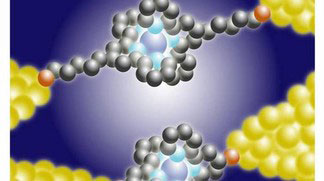| Sep 15, 2011 |
The two-impurity Kondo problem
|
|
(Nanowerk News) Two magnetic atoms, one attached to the tip of a scanning tunnelling microscope and one adsorbed on a metal surface, each constituting a Kondo system, have been proposed as one of the simplest conceivable systems potentially exhibiting quantum critical behaviour.
|
 |
|
The group of Prof. Kern Klaus (LSEN - Laboratory of Nanoscale Science) at EPFL, in collaboration with researchers from France, Denmark, Hungary, Germiny and China, have succeeded in implementing this concept experimentally for cobalt dimers clamped between a scanning tunnelling microscope tip and a gold surface ("A tunable two-impurity Kondo system in an atomic point contact").
|
|
Control of the tip–sample distance with subpicometre resolution enables them to tune the interaction between the two cobalt atoms with unprecedented precision. Electronic transport measurements on this two-impurity Kondo system revealed a rich physical scenario, which is governed by a crossover from local Kondo screening to non-local singlet formation due to antiferromagnetic coupling as a function of separation of the cobalt atoms.
|

